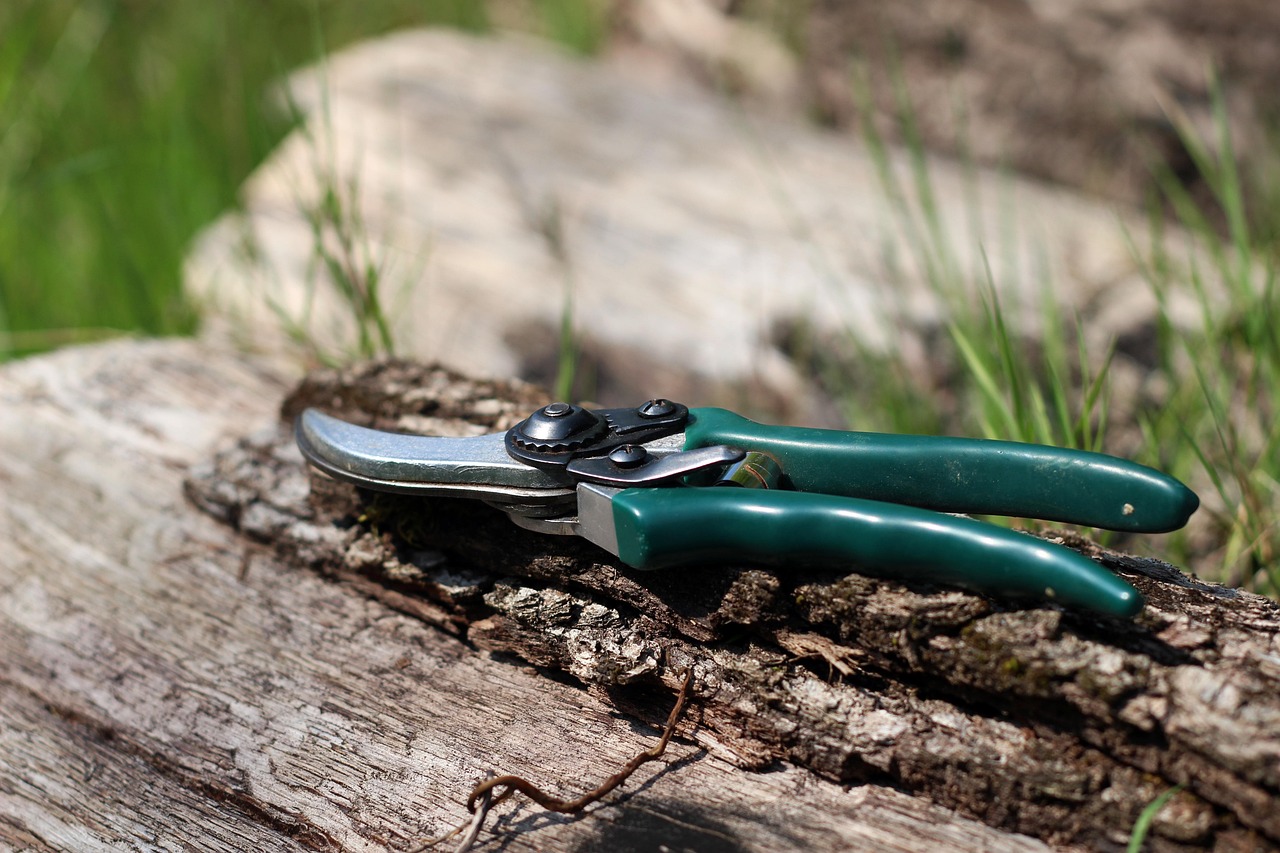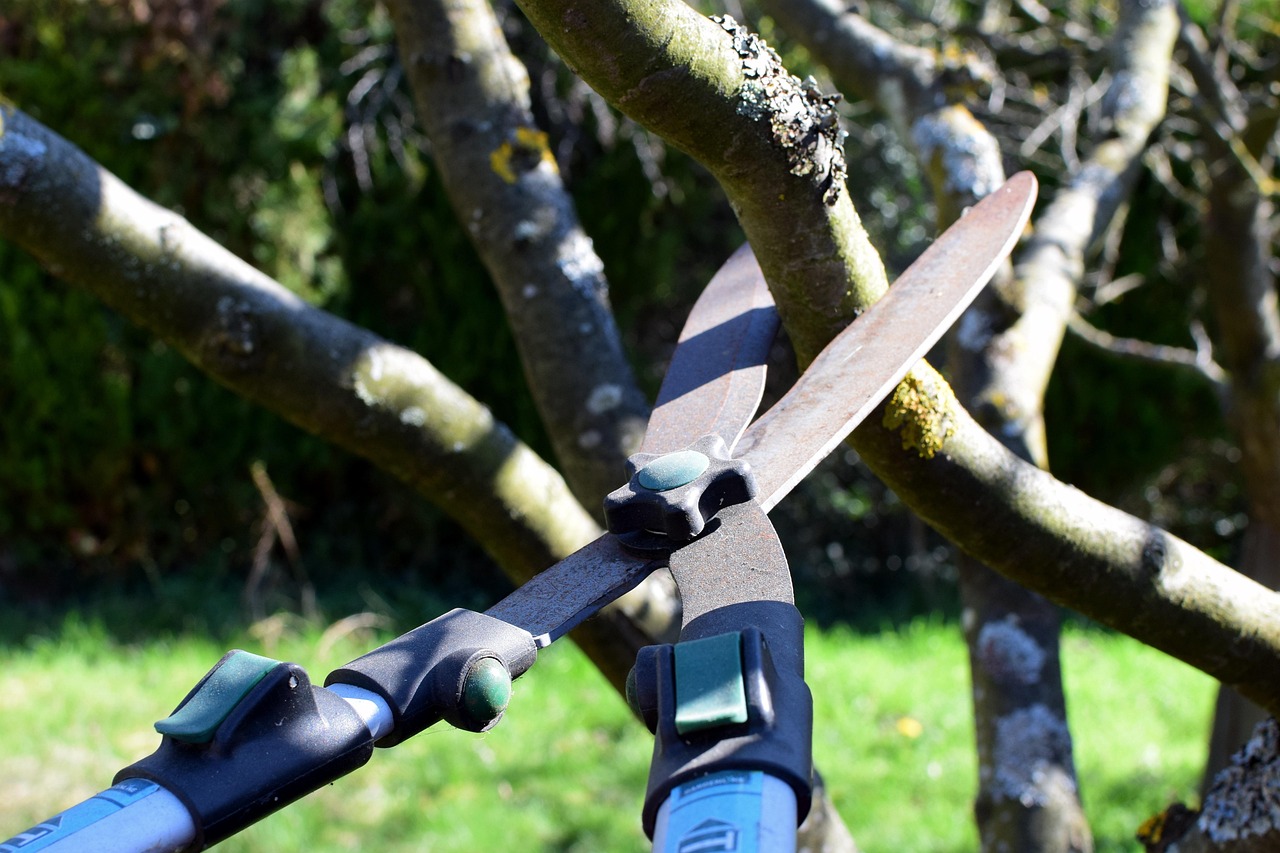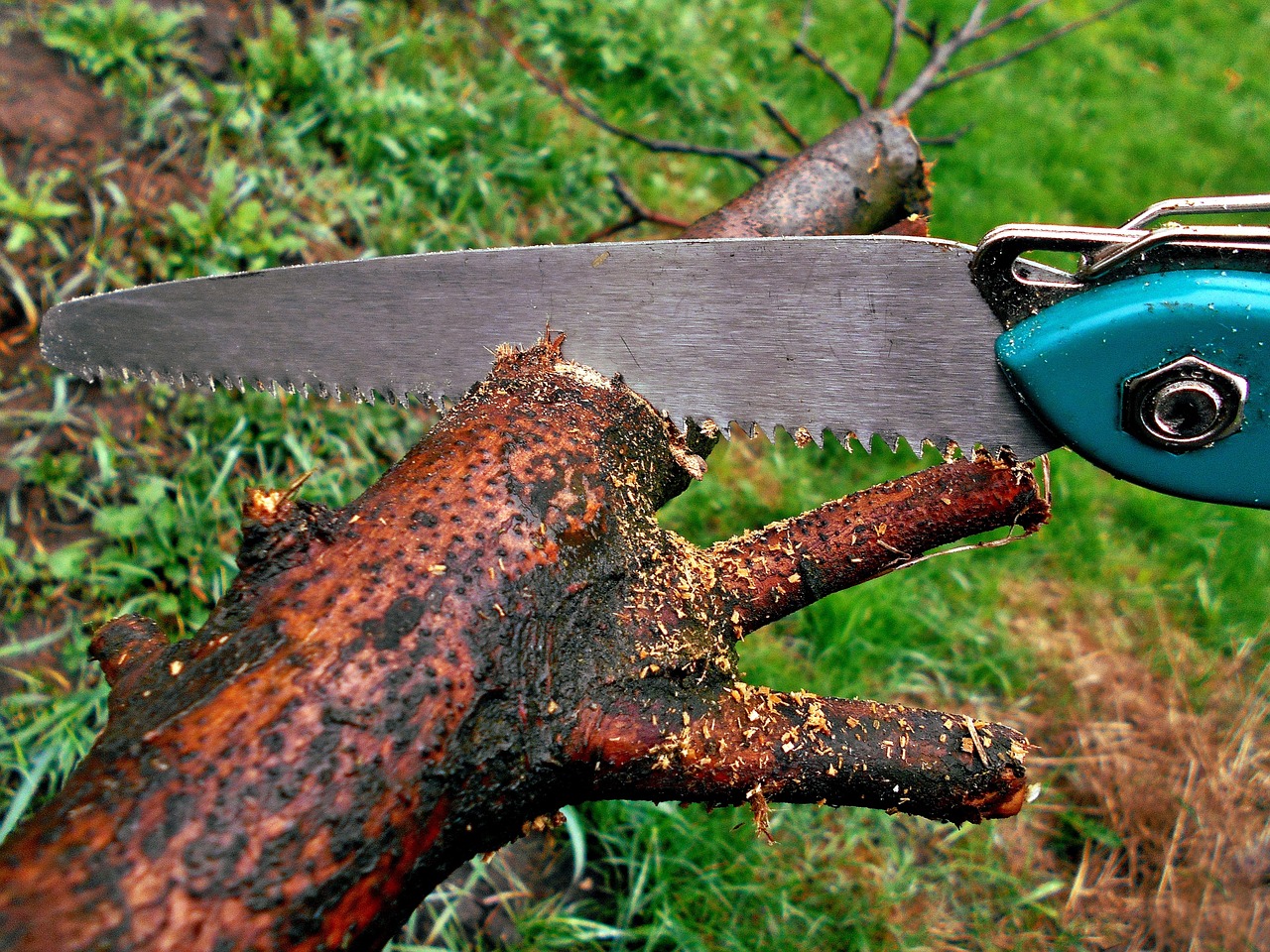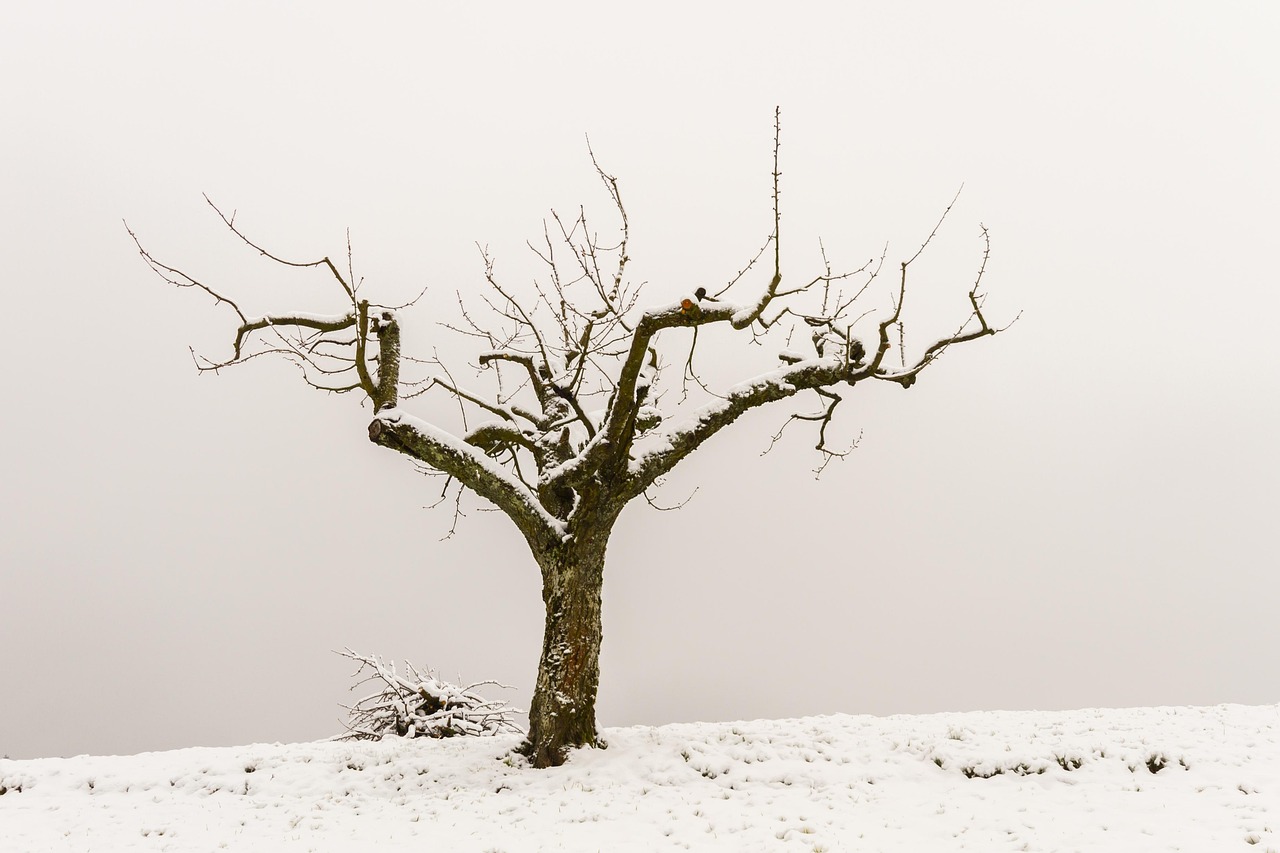Winter pruning in frost-prone regions is essential for maintaining healthy plants. It encourages growth, removes dead or diseased branches, and helps shape the plant. Timing and technique are crucial to prevent damage from frost.
Winter is a critical time for gardeners and landscapers, especially in regions that experience frost. While many plants are dormant during these colder months, winter pruning can set the foundation for healthy growth in the spring. This practice involves cutting back certain plants and trees to promote better structure and vitality. However, timing and techniques must be adapted to the unique challenges posed by frost-prone areas.

Frost-prone regions often have specific challenges that can affect how and when pruning should be done. Cold temperatures can cause damage to tender new growth, so the timing of pruning is vital. Pruning too early may expose plants to frost damage, while waiting too long may lead to poor growth in the following season.
Understanding the Basics of Winter Pruning
Before diving into the specifics of winter pruning for frost-prone regions, it is important to understand some basic principles. Pruning should be approached with a clear strategy in mind. Here are some key reasons why winter pruning is beneficial:
- Encourages Healthy Growth: Pruning helps stimulate new growth by removing dead or diseased branches.
- Improves Air Circulation: Thinning out branches can enhance airflow, reducing the risk of disease.
- Shapes Plants: Proper pruning can help maintain an attractive shape and size.
- Increases Sunlight Exposure: Reducing excess foliage allows more sunlight to reach the interior of the plant.
When planning for winter pruning, it is also important to consider the types of plants you are working with. Some species respond better to winter pruning than others. The following table highlights common plants and their recommended pruning times:

| Plant Type | Best Pruning Time | Notes |
|---|---|---|
| Deciduous Trees | Late winter (February – March) | Prune before new growth begins. |
| Fruit Trees | Late winter (March) | Focus on removing dead or crossing branches. |
| Perennials | Late winter (January – February) | Cut back to healthy buds. |
| Shrubs | Early spring (March) | Prune after the last frost date. |
In frost-prone areas, knowing your local climate and understanding your plants’ needs is crucial. Different plants have varying levels of frost sensitivity. For example, tender perennials may need more protection than hardy shrubs. It is essential to monitor local weather forecasts and adjust your pruning schedule accordingly.
The technique used during pruning also plays a significant role in ensuring plant health. Sharp tools should always be used to make clean cuts. This minimizes damage to the plant and reduces the risk of disease. Additionally, when making cuts, it is important to cut at a 45-degree angle and ensure that any cuts are made just above a bud or leaf node. This technique promotes faster healing and encourages growth in the desired direction.
Tips for Successful Winter Pruning
Here are some practical tips for successful winter pruning in frost-prone regions:

- Timing is Key: Wait until the coldest part of winter has passed but before new growth begins.
- Avoid Rainy Days: Pruning during wet conditions can increase the risk of disease.
- Inspect Your Plants: Look for signs of disease or damage before you start pruning.
- Make Clean Cuts: Use sharp tools and disinfect them before use to prevent spreading diseases.
- Remove Dead Wood: Focus on cutting away dead, diseased, or damaged branches first.
Applying these tips can significantly improve not just the health of your plants but also their appearance throughout the growing season. Winter pruning is about preparing your garden for success when spring arrives. With proper knowledge and techniques, you can ensure that your plants thrive even in challenging frost-prone environments. As we move forward, we will dive deeper into specific techniques and considerations tailored for different types of plants commonly found in these regions.
Pruning Techniques for Different Plant Types
Understanding the specific needs of various plants is crucial when it comes to winter pruning in frost-prone regions. Each type of plant requires a tailored approach to ensure optimal health and growth. Below, we will discuss effective pruning techniques for trees, shrubs, and perennials.
Pruning Trees
Pruning trees during the winter months can help maintain their structure and encourage vigorous growth in the spring. Here are some important techniques:

- Remove Suckers: Suckers are shoots that grow from the base or roots of a tree. Removing them helps direct energy to the main trunk.
- Thin Out Crowded Branches: Identify branches that are crossing or crowding one another. Remove weaker branches to improve air circulation.
- Focus on Young Trees: Young trees benefit from formative pruning to establish a strong framework. Aim for a central leader and well-distributed scaffold branches.
- Cut Back Long Branches: For older trees, cutting back excessively long branches can prevent breakage during heavy snowfall.
Pruning Shrubs
Shrubs often require different pruning strategies based on their blooming habits. Here are some guidelines for effective shrub pruning:
- Identify Blooming Type: Shrubs that bloom on old wood should be pruned after flowering, while those that bloom on new wood can be pruned in late winter.
- Remove Dead or Diseased Wood: Always start by removing any dead or diseased branches to promote healthier growth.
- Shape and Size Control: Trim back overgrown shrubs to maintain desired height and shape. Aim for a natural look.
- Encourage New Growth: Cut back old stems to ground level for rejuvenation. This technique is particularly effective for hardy perennials like butterfly bush.
Pruning Perennials
Perennials often benefit from a more aggressive approach during winter pruning. Here are some strategies:
- Cut Back to Healthy Buds: For perennials like daylilies and hostas, cut back foliage to about 2-3 inches above the ground.
- Remove Debris: Clear away dead leaves and stems around perennials to prevent pests and diseases from overwintering.
- Divide Overgrown Clumps: If perennials have become crowded, winter is a great time to divide them and replant sections in different areas of your garden.
Considerations for Frost-Prone Areas
Pruning in frost-prone regions requires additional considerations to protect plants from cold damage. Below are important factors to keep in mind:
Understanding Frost Dates
Knowing the average frost dates in your area is essential for effective winter pruning. This information helps determine when to prune without risking frost damage. Here’s how to find your local frost dates:
- Consult Local Extension Services: Many agricultural extension services provide frost date information specific to your area.
- Use Online Resources: Websites like NOAA or local gardening forums often have frost date calculators based on zip codes.
- Keep a Gardening Journal: Track weather patterns in your own garden to better predict frost occurrences over time.
Choosing the Right Tools
The tools you use for pruning can greatly influence the health of your plants. Selecting appropriate, high-quality tools will help ensure clean cuts and minimize damage:
- Hand Pruners: Ideal for small branches and delicate pruning tasks. Ensure they are sharp and well-maintained.
- Loppers: Useful for thicker branches that cannot be handled by hand pruners. Look for bypass models for cleaner cuts.
- Saws: A pruning saw is necessary for larger branches. Choose a lightweight model for ease of use.
- Protective Gear: Always wear gloves and eye protection while pruning to prevent injuries.
Avoiding Common Pruning Mistakes
Even experienced gardeners can make mistakes during winter pruning. Here are some common errors to avoid:
- Pruning at the Wrong Time: Pruning too early can expose new cuts to frost damage, while waiting too long may hinder growth.
- Over-Pruning: Removing too much foliage can shock the plant and hinder its ability to recover in spring.
- Poor Cutting Technique: Using dull tools or making improper cuts can lead to disease entry points.
- Neglecting Cleanliness: Failing to disinfect tools between uses can spread diseases among plants.
By understanding these techniques, considerations, and common mistakes, gardeners in frost-prone regions can effectively prepare their plants for the upcoming growing season through careful winter pruning practices.
Winter Pruning for Specific Plant Types
Different plants have unique requirements when it comes to winter pruning. Understanding these requirements can greatly enhance the health and productivity of your garden. This section will explore pruning strategies tailored for specific types of trees, shrubs, and perennials commonly found in frost-prone regions.
Pruning Fruit Trees
Fruit trees are a delightful addition to any garden, providing both beauty and delicious produce. However, proper pruning is essential to ensure a healthy harvest. Here are some key techniques:
- Timing: The best time to prune most fruit trees is during late winter, just before the buds begin to swell. This reduces the risk of frost damage.
- Remove Dead or Diseased Branches: Start by cutting away any dead, damaged, or diseased branches. This helps prevent the spread of disease and encourages healthy growth.
- Thin Out Crowded Areas: Identify crowded areas where branches cross each other. Thin out some branches to improve airflow and sunlight penetration.
- Maintain an Open Center: For trees like peach and plum, aim for an open center shape. This allows light to reach all parts of the tree.
Pruning Ornamental Trees
Ornamental trees enhance landscapes with their beauty. Pruning these trees requires a delicate touch to maintain their aesthetic appeal:
- Focus on Shape: Maintain the natural shape of the tree while removing any unsightly branches.
- Remove Water Sprouts: Water sprouts are vigorous shoots that grow straight up from the trunk or branches. Remove these to promote a more attractive form.
- Consider the Season: Some ornamental trees can be pruned in early spring before blooming. Be mindful of the specific species and their blooming cycles.
Pruning Deciduous Shrubs
Deciduous shrubs require careful pruning to promote growth and flowering. Here are some effective strategies:
- Identify Flowering Type: Determine if the shrub blooms on old wood (like lilacs) or new wood (like hydrangeas) to decide the right timing for pruning.
- Cut Back Old Growth: For shrubs that bloom on new wood, cut back last year’s growth to encourage new stems.
- Remove Spent Blooms: Trim spent flowers after blooming to promote fuller growth and potentially encourage a second bloom.
The Benefits of Proper Winter Pruning
Proper winter pruning provides numerous benefits that extend beyond aesthetics. It promotes overall plant health and can lead to increased yields in fruit-bearing plants. Here are some notable advantages:
- Improved Air Circulation: Removing excess branches allows more air to circulate through the plant, reducing the risk of fungal diseases.
- Enhanced Sunlight Exposure: Proper pruning ensures that sunlight reaches all parts of the plant, promoting even growth.
- Increased Yield: Fruit trees that are pruned correctly often yield more fruit due to better light exposure and airflow.
- Aesthetic Appeal: Well-pruned plants enhance the beauty of your garden, making it more enjoyable for you and your visitors.
Pest and Disease Management During Winter Pruning
Winter pruning is not just about cutting back plants; it also plays a crucial role in managing pests and diseases. Here are some strategies to incorporate pest and disease management into your winter pruning routine:
- Inspect for Pests: During pruning, look for signs of pests such as borers or aphids. Remove any affected branches immediately.
- Treat Fungal Infections: If you notice any fungal infections, treat them with an appropriate fungicide before pruning.
- Cleansing Cuts: After making cuts, apply a sealant or wound dressing if necessary. This helps protect against pathogens.
- Regular Maintenance: Regularly check your garden for pests throughout the winter months. Early detection is key to effective management.
Pest Management Techniques
Implementing pest management techniques can be highly effective during winter months. Here are some methods to consider:
- Use Dormant Oil Sprays: Applying dormant oil can smother overwintering pests on trees and shrubs.
- Encourage Beneficial Insects: Create habitats for beneficial insects that prey on common garden pests.
- Avoid Excess Nitrogen Fertilization: High nitrogen levels can encourage soft growth that is more susceptible to pests.
The Role of Mulching in Winter Care
A mulch layer can provide additional protection for plants during harsh winter conditions. Here’s how mulching can aid in winter plant care:
- Insulation: Mulch acts as an insulator, helping to regulate soil temperature and protect roots from extreme cold.
- Moisture Retention: A layer of mulch retains moisture in the soil, which is beneficial during dry winter months.
- Weed Suppression: Mulching can help suppress weeds that compete with plants for nutrients and water.
Select organic mulches such as straw, shredded bark, or wood chips, as they break down over time and improve soil health. Proper mulching combined with careful winter pruning creates a robust foundation for healthy plants in frost-prone regions.
Additional Tips for Successful Winter Pruning
As you prepare for winter pruning in frost-prone regions, there are a few additional tips to keep in mind that can enhance the effectiveness of your efforts. These insights can help ensure that your plants thrive despite the challenges posed by cold weather.
- Plan Your Pruning Schedule: Map out a pruning schedule based on the types of plants in your garden and their specific needs. This will help you stay organized and ensure that you prune at the optimal time.
- Monitor Weather Conditions: Keep an eye on the weather. Avoid pruning when temperatures are expected to drop significantly right after your cuts, as this might increase the risk of frost damage.
- Educate Yourself: Take the time to research the specific plants in your garden. Understanding their growth habits and vulnerabilities will help you tailor your pruning techniques effectively.
- Seek Professional Advice: If you’re unsure about how to prune a particular plant, consider consulting with local horticulturists or extension services for guidance tailored to your region.
The Importance of Seasonal Maintenance
In addition to winter pruning, seasonal maintenance is vital for ensuring the long-term health of your garden. Here are some practices to incorporate throughout the year:
- Spring Fertilization: Apply a balanced fertilizer in spring to provide nutrients that support new growth.
- Summer Watering: Ensure adequate watering during dry spells. Deep watering encourages strong root development.
- Fall Clean-Up: Remove fallen leaves and debris in the fall to prevent diseases from overwintering in your garden.
By establishing a comprehensive seasonal maintenance routine, you create a supportive environment for your plants. This proactive approach complements winter pruning and enhances overall garden health.
Final Thoughts
Winter pruning in frost-prone regions is a vital task that sets the stage for healthy, thriving plants come spring. By understanding the specific needs of different plant types, employing effective techniques, and adopting best practices for pest management and mulching, gardeners can navigate the challenges posed by cold weather with confidence.
Your efforts during winter not only improve the appearance of your landscape but also contribute significantly to plant vitality and productivity. Remember to stay informed about your local climate, monitor your plants regularly, and adjust your pruning schedule as necessary. With patience and care, you can cultivate a vibrant garden that flourishes through every season.
Ultimately, successful winter pruning is about more than just cutting back branches; it’s about nurturing your plants and preparing them for future growth. Embrace the process, learn from each experience, and enjoy the bountiful rewards that follow in your flourishing garden.
